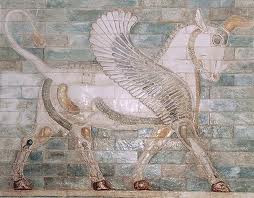The Open Richly Annotated Cuneiform Corpus (ORACC) is a corpus-building cooperative which provides facilities and support for the creation of free online editions of cuneiform texts
It comprises a workspace and tool-kit for the development of a complete corpus of cuneiform whose rich annotation and open licensing support the next generation of scholarly research.
ORACC is made up of the following resources:
AEB: Assyrian Empire Builders

This website places the letters exchanged between Sargon II, king of Assyria (721-705 BC), and his governors and magnates in their historical and cultural context and provides resources and materials for their study.
Amarna: The Amarna Tablets

The Amarna corpus comprises transliterations of the 380 cuneiform tablets found at Tell el-Amarna (ancient Akhetaten) in Egypt. It contains diplomatic correspondence and Akkadian scholarly works from the mid-14th century BC and was kindly donated to Oracc by Shlomo Izre'el.
CAMS: Corpus of Ancient Mesopotamian Scholarship Starting with tablets from Huzirina, Kalhu, and Uruk for the Geography of Knowledge project, CAMS will eventually comprise editions and translations of a wide range of Mesopotamian scholarly writings.
Starting with tablets from Huzirina, Kalhu, and Uruk for the Geography of Knowledge project, CAMS will eventually comprise editions and translations of a wide range of Mesopotamian scholarly writings.
 Starting with tablets from Huzirina, Kalhu, and Uruk for the Geography of Knowledge project, CAMS will eventually comprise editions and translations of a wide range of Mesopotamian scholarly writings.
Starting with tablets from Huzirina, Kalhu, and Uruk for the Geography of Knowledge project, CAMS will eventually comprise editions and translations of a wide range of Mesopotamian scholarly writings.CDLI: The Cuneiform Digital Library Initiative
The foundational online cataloging and archiving project for the cuneiform corpus. The Oracc presentation is based directly on public CDLI data which is updated nightly.

The foundational online cataloging and archiving project for the cuneiform corpus. The Oracc presentation is based directly on public CDLI data which is updated nightly.
CTIJ: Cuneiform Texts Mentioning Israelites, Judeans, and Other Related Groups
CTIJ studies cuneiform texts and onomastic data pertaining to Israelites, Judeans, and Related Population Groups during the Neo-Assyrian, Neo- and Late Babylonian, and Achaemenid Periods (744-330 BCE).
DCCLT: Digital Corpus of Cuneiform Lexical Texts
 DCCLT provides editions and translations of lexical texts (word lists and sign lists) from all periods of cuneiform writing.
DCCLT provides editions and translations of lexical texts (word lists and sign lists) from all periods of cuneiform writing.DCCMT: Digital Corpus of Cuneiform Mathematical Texts
 DCCMT aims to present transliterations and translations of around a thousand published cuneiform mathematical tablets.
DCCMT aims to present transliterations and translations of around a thousand published cuneiform mathematical tablets.ePSD: electronic Pennsylvania Sumerian Dictionary
 The PSD is preparing an exhaustive dictionary of the Sumerian language which aims to be useful to non-specialists as well as Sumerologists.
The PSD is preparing an exhaustive dictionary of the Sumerian language which aims to be useful to non-specialists as well as Sumerologists.GKAB: The Geography of Knowledge in Assyria and Babylonia
The AHRC-funded GKAB project studies Assyro-Babylonian scholarship by editing the contents of four cuneiform libraries in the Corpus of Ancient Mesopotamian Scholarship and by analysing their changing socio-political contexts.
HBT2: HBTIN L2

HBTIN presents the texts, iconography and onomastic data in the cuneiform documentation from Hellenistic Babylonia, primarily from Uruk. HBTIN texts form the demonstrator corpus of the Berkeley Prosopography Service (BPS).
HBTIN: Hellenistic Babylonia: Texts, Iconography, Names

HBTIN presents the texts, iconography and onomastic data in the cuneiform documentation from Hellenistic Babylonia, primarily from Uruk. HBTIN texts form the demonstrator corpus of the Berkeley Prosopography Service (BPS).
K&P: Knowledge and Power in the Neo-Assyrian Empire

This website presents Neo-Assyrian scholars' letters, queries, and reports to their kings in seventh-century Nineveh and provides resources to support their use in undergraduate teaching.
OGSL: Oracc Global Sign List

Provides a global registry of sign names, variants and readings for use by ORACC.
Qcat: The Q Catalogue

The Q catalogue provides a global registry of compositions rather than objects, supporting the creation of scores on Oracc.
SAAo: State Archives of Assyria Online

An open-access web resource that aims to make the rich Neo-Assyrian materials found in the royal archives of Nineveh, and elsewhere, more widely accessible. Portals include Knowledge and Power and Assyrian Empire Builders.

No comments:
Post a Comment